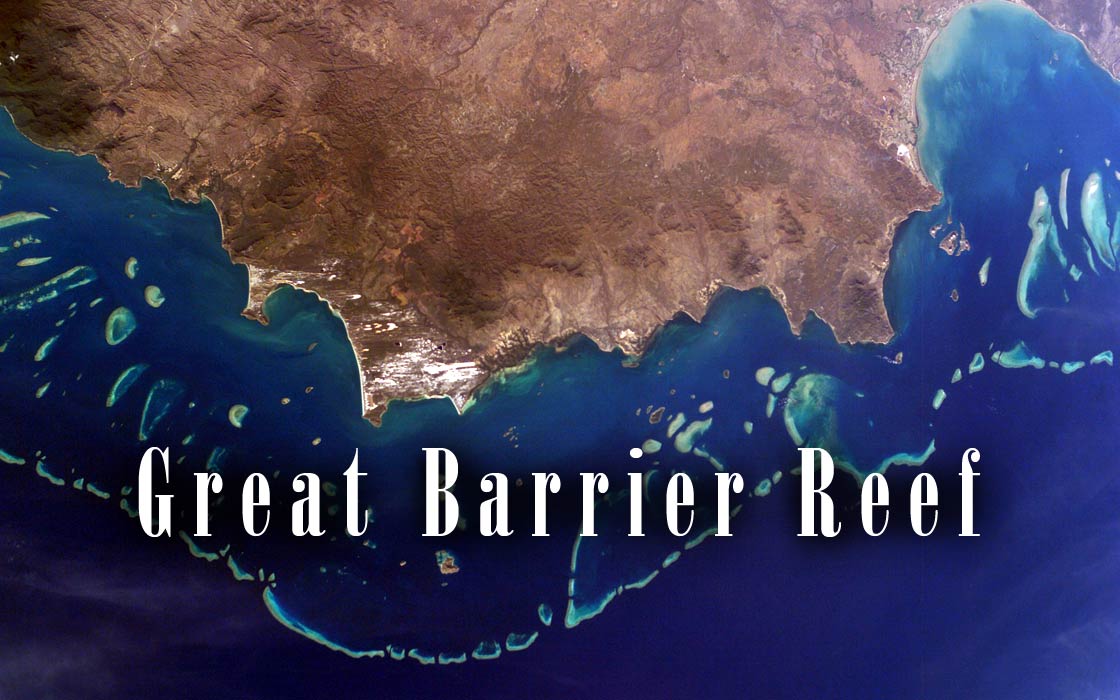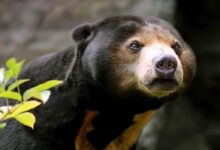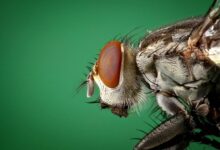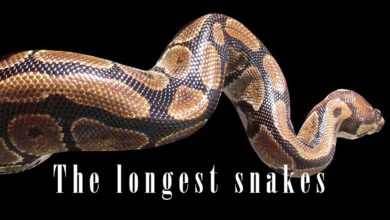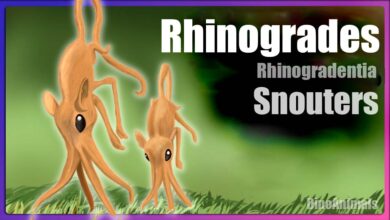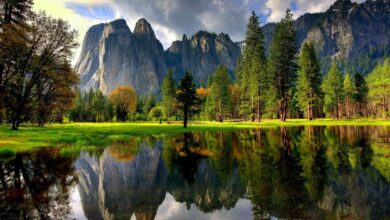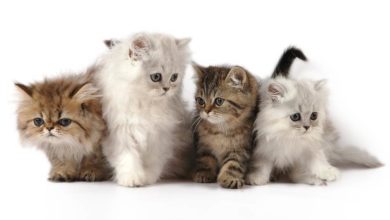The Great Barrier Reef
If there is Paradise anywhere on Earth, it is possible that it is under water. The kingdom of starfish, sponges, crustaceans, fish, turtles and sea snakes is a perfect example of a natural balance. With a huge number of beings living there, it does not get destroyed, on the contrary – it slowly grows and creates new foundations.
Harmony in the coral kingdom is based on the cycle of life and death. Dead coral polyp skeletons are also the skeleton of the Reef that has been forming for millions of years. So let’s dive into the world of one of the wonders of nature – the Great Barrier Reef without fear.
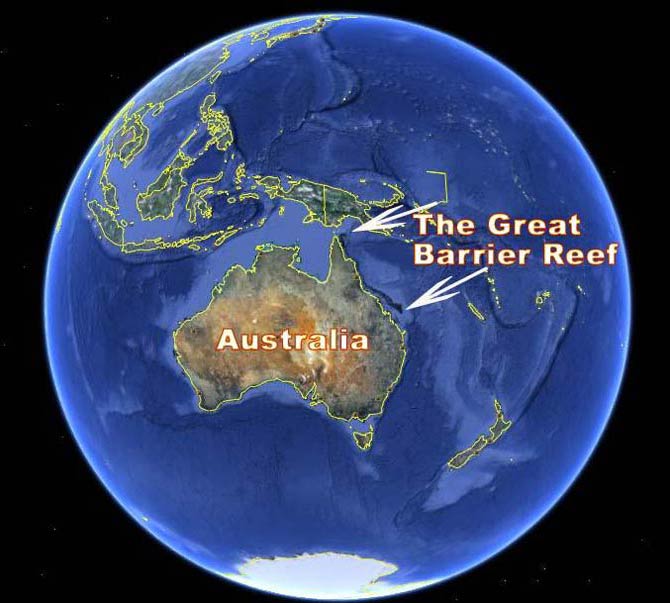
Location
Welcome to Australia – a place where natural wonders are easy to find. One of such wonders is certainly the Great Barrier Reef (for ease of reference we will refer to it in this article as GBR. To admire it closely, you should go to the north of the continent, more specifically to the coast of Queensland.
The Great Barrier Reef is at different distances from the shore. This distance varies between 15 and 200 km. In the central part, the reefs are far apart, but in the north and south, they are close to each other. The slopes of the Reef from the sea are very steep and fall to a depth of about 1.5 km.
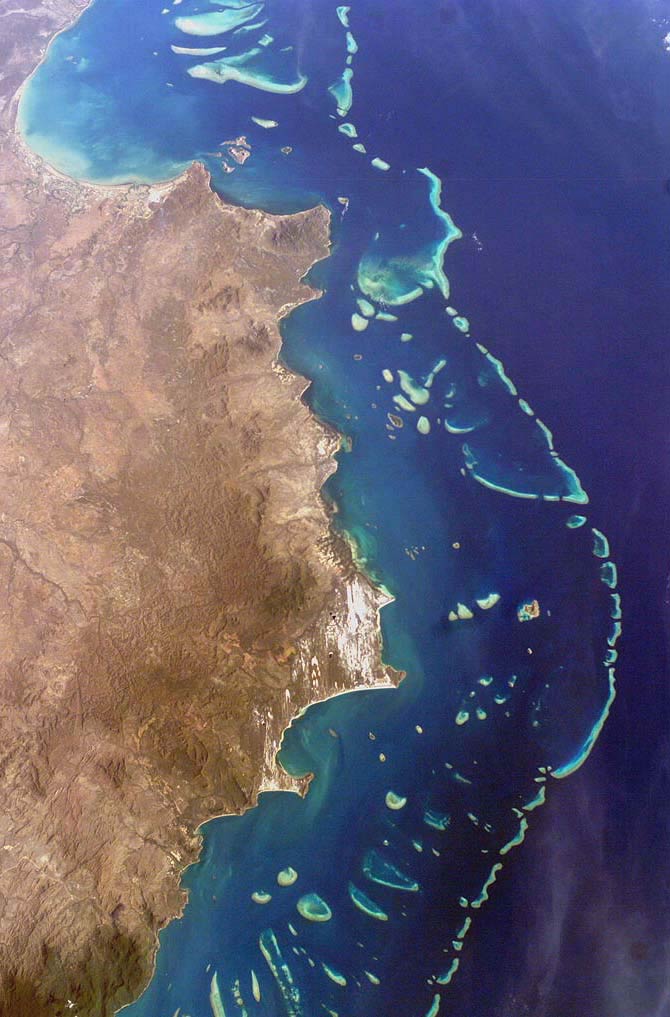
Basic data
Under the name “Great Barrier Reef” there are actually nearly 3,000 smaller reefs and 900 islands stretching more than 2,300 km (1,400 mi) from Lady Elliot Island to the Gulf of Papua New Guinea. The total area of all GBR’ components’ is 344,400 km2 (133,000 sq mi).
Part of the GBR is protected by The Great Barrier Reef Marine Park. The main goal of the park is to limit human impact on the reef ecosystem, such as the uncontrolled influx of tourists or fishing.
A lagoon forms between the Reef and the Australian coast – an area of shallows cut off from the sea.
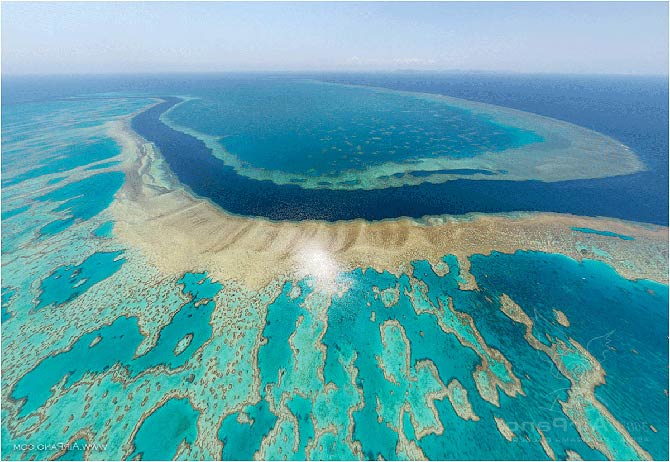
Origin
The beginnings of the development of the Great Barrier Reef date back to about 18 million years ago. The present form of the ecosystem began to form much later, “only” around 8,000 years ago, when the construction of new layers, maintained on centuries-old foundations, began.
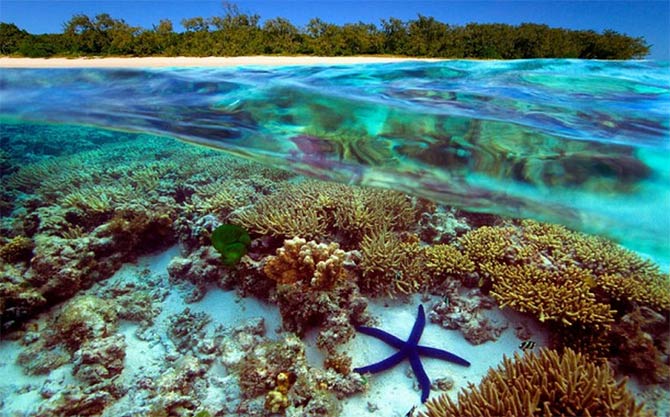
How is the Great Barrier Reef formed?
Sometimes the term “live rocks” is used to describe coral reefs and there is a lot of truth to it. The limestone skeleton of the GBR consists of thousands of coral polyps – marine animals from the Cnidaria phylum. These polyps form a limestone skeleton by taking calcium carbonate from the water. As the corals reproduce, the reef grows. The polyps are connected with each other by living tissue, which contributes to the strengthening of the entire structure.
Important puzzles that build GBR are calcareous seaweed, resembling red cotton wool. Their tasks include the production of calcium, which strengthens the reef. The seaweed on the slopes of the building acts as “cement” that binds the sedimentary layers.
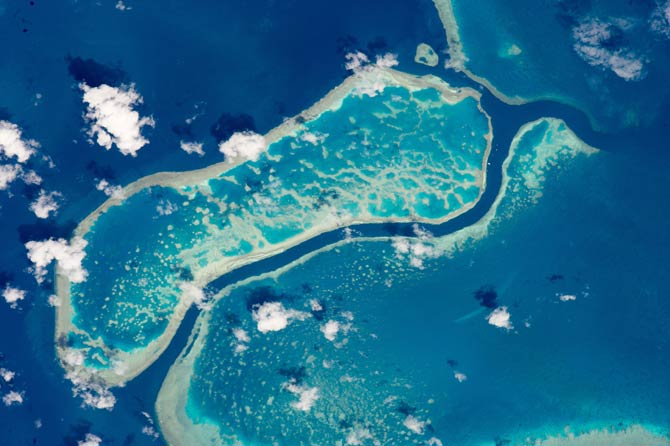
Variety of shapes and colors
As each species of coral has a different shape and growth pattern, there are countless combinations of shapes and colors within GBR. Coral polyps form sheets, plates, but also mounds, trunks and horns.
Dead polyps are white – they are the main building blocks of the skeleton. Living corals and sponges, however, are richly colored. Thanks to them, GBR delights with shades of yellow, red, orange, pink, green and purple. It is also easy to find neon, phosphorescent colors of fish such as wrasses, deeply saturated starfish and sea snakes.
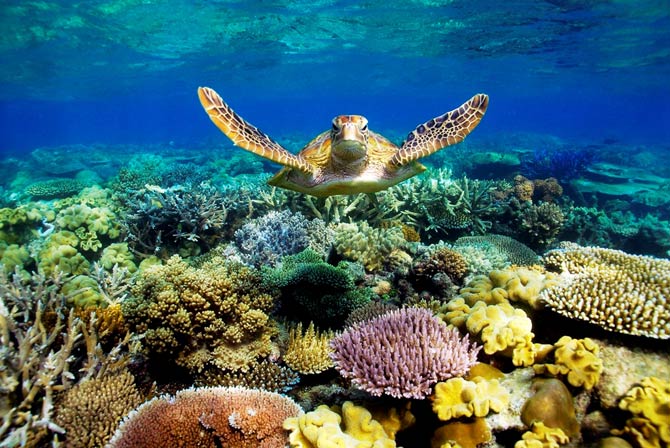
Hosts, neighbors and guests
There are 30 species of cetaceans in the waters surrounding the GBR, including humpback whale, mink whale and humpback dolphin. The characteristic inhabitants of GBR are also dugongs – sea mammals that are approx. 3 m long and weigh 400 kg.
Coral trout, spotted clownfish, and two-spot red snapper, are just 3 examples of the more than 1,500 living in the Great Barrier Barrier. A large group of fish are sharks, chimeras and rays – about 125 species. And let’s not forget about 9 species of broadnosed pipefish and 9 species of seahorses. Apart from fish, there are 17 species of sea snakes – many of them swim 50 m deep.
The rich coral fauna includes several species of sea turtles: the leatherback turtle – the largest turtle in the world, the green turtle (from the fairy tale “Finding Nemo”), the olive turtle, the Australian tortoise, the hawksbill sea turtle and the loggerhead turtle.
Dugongs, sea turtles and many species of fish enjoy spending time among the sea grasses. There are 15 species of this aquatic plant within the Reef. The most common are Halodule and Halophila.
About 4,000 species of mollusks live in the Great Barrier Reef. They include nudibranchs (a group of soft-bodied, marine gastropod molluscs) colorful like a rainbow, impressively shaped snails from the cone family and a giant clam – the largest species of clams in the world.
The reef is visited by a total of 215 species of birds. The white-tailed eagle and the roseate tern nesting in the Great Barrier Reef area. Most nests are made on reef islands, mainly in the northern and southern regions of GBR. Over 2,000 plant species known to man grow on these islands.
Our list also includes crocodiles. They do not live directly in the Reef, but close to shores flooded with salt marshes and overgrown with mangrove forests.
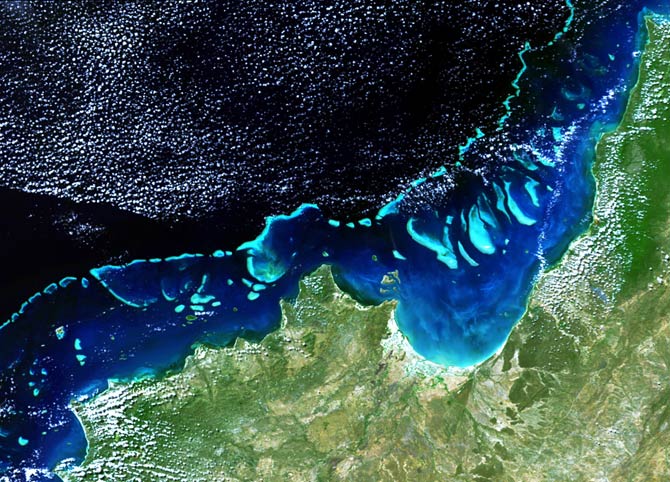
Fish cooperation
Such a large and ancient structure would not exist without its harmony and cooperation. Fish often gather in one place while waiting for food to appear. The smaller fish clean the larger of parasites and dead tissue. There are many examples of such cooperation.
There is a clear symbiosis between gudgeon (a species of fish) and crustaceans. A pair of crustaceans form a tunnel in which fish can also live. If there is a threat in the area, the gudgeon informs the crustaceans about it by hitting their antennae with its tail.
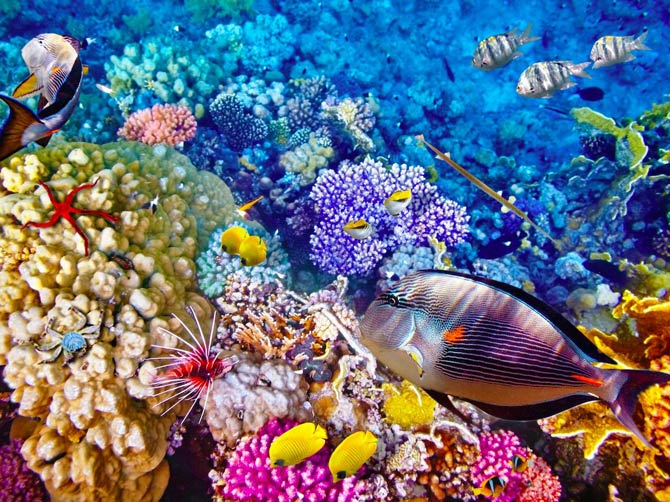
Tourism – lights and shadows
The Great Barrier Reef is a real paradise for divers, but this extremely diverse place can be admired not only by qualified swimmers.
The number of tourists coming to the marine park every year can make you feel dizzy – the number is close to 2 million. Although for the park’s authorities it is a real goldmine, there are voices of the opposition saying that huge numbers of tourists can negatively affect the functioning of the Reef.
Tour operators offer cruises on ships ranging in size from pontoons to luxury yachts. The boats have glass bottoms so that hikers can watch the phenomena taking place in GBR without any problems. The most affluent are targeted at underwater observatories and helicopter flights (not under water, of course, but above the surface, from where we have a view of a large area of the ocean).
Diving is the most popular form of tourism activity so far. The tourism plan in the marine park is geared towards ecological balance. Officially, we are dealing with so-called ecotourism.
The problem of this type of activity in the Reef area is the permanent, large platforms – tourist bases that resemble ships, which are also the habitat of birds that defecate directly into the water that surrounds the corals.
Bird faeces contain nitrogen, phosphorus, often DDT and mercury, which causes diseases in fragile stingrays. It has been shown that in areas without platforms, only about 1% of the corals suffer from this type of disease, while approximately 12% of the corals living under the platforms developed the diseases mentioned above.
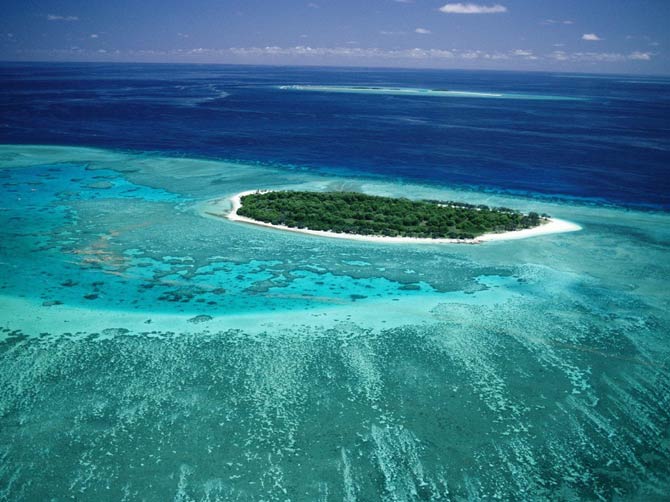
Detailed data
The Great Barrier Reef
- The Great Barrier Reef
- consists of 2,900 individual reefs
- and approx. 900 coral islands
- Great Reef area: 344,400 km2 (133,000 sq mi)
- Length of the Great Reef: 2,300 km (1,400 mi)
- Great Barrier Reef Marine Park was founded in 1975
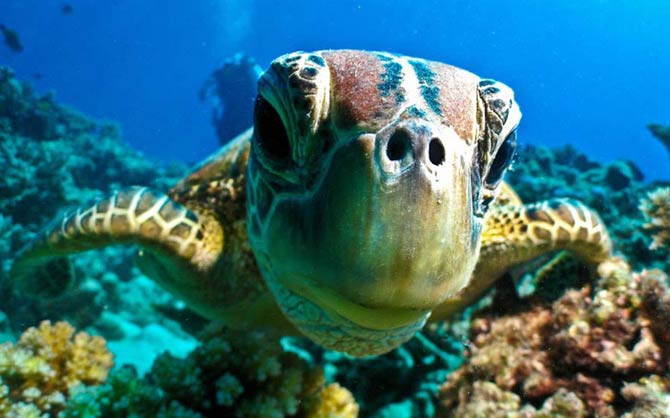
Great Barrier Reef – interesting facts
- For centuries, GBR has existed in the minds of Australian Aborigines and the indigenous inhabitants of the Torres Strait islands. Both ethnic groups consist of about 70 tribes for whom the Reef is an important cultural element.
- The Great Barrier Reef is one of the seven wonders of the underwater world alongside such phenomena as Lake Baikal and the Belize Barrier Reef.
- The main threats to the survival of GBR are environmental changes, water pollution, and the rapidly reproducing crown-of-thorns starfish – a species of starfish that feeds on coral polyps. A 2000 study showed that the rapid growth of the Crown-of-thorns starfish had destroyed about 60% of the Reef’s living shell. In turn, the reasons for the increase in the population of this echinoderm are considered to be water pollution and the reduction in the number of predators as a result of overfishing.
- It is estimated that every year tourism in the area of the Great Reef generates approximately USD 6.4 billion and provides work for approximately 64 thousand people.
- Fishing in the Great Reef region generates $ 1 billion in income and employs 2,000 people.


